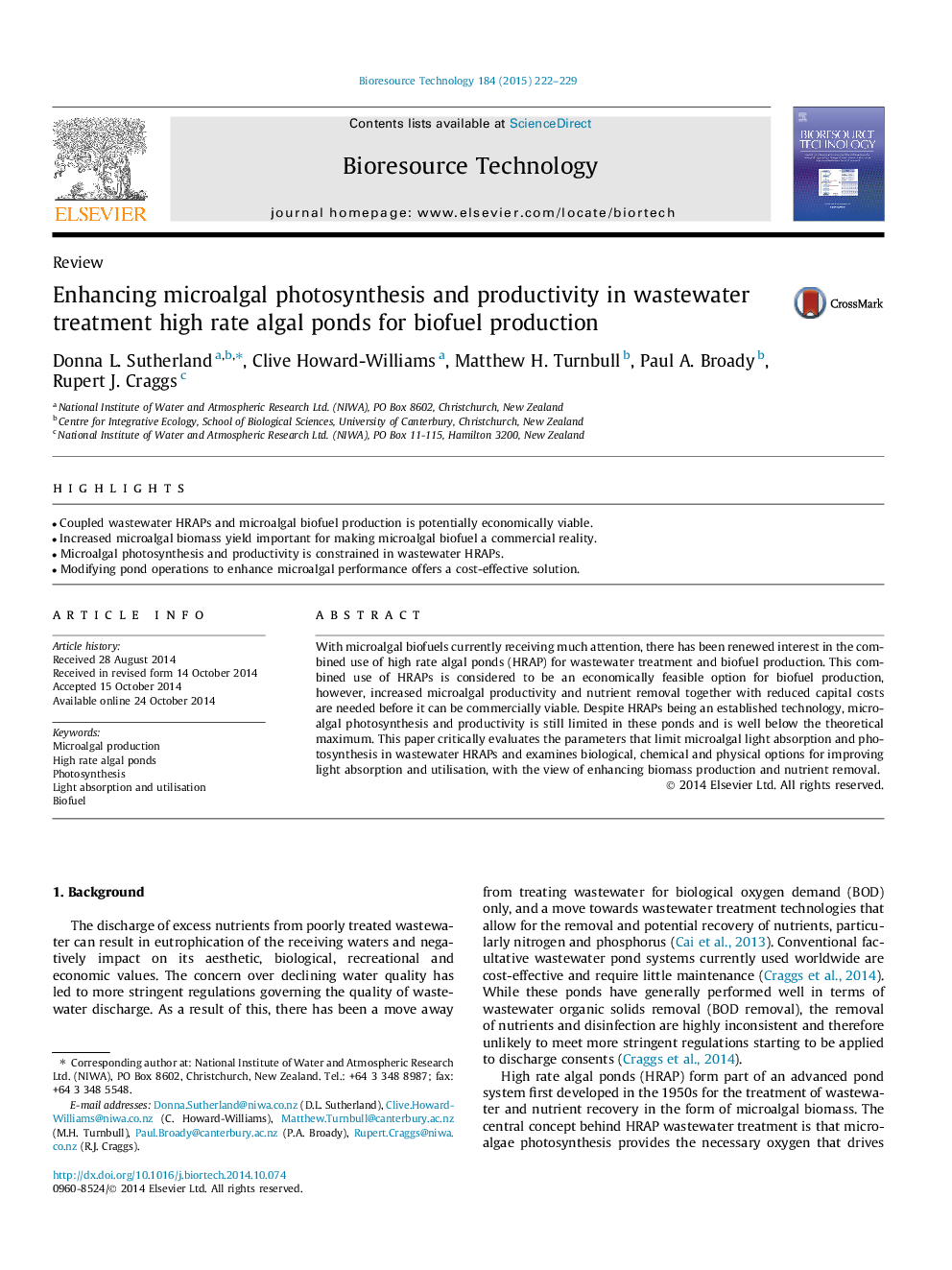| Article ID | Journal | Published Year | Pages | File Type |
|---|---|---|---|---|
| 679924 | Bioresource Technology | 2015 | 8 Pages |
•Coupled wastewater HRAPs and microalgal biofuel production is potentially economically viable.•Increased microalgal biomass yield important for making microalgal biofuel a commercial reality.•Microalgal photosynthesis and productivity is constrained in wastewater HRAPs.•Modifying pond operations to enhance microalgal performance offers a cost-effective solution.
With microalgal biofuels currently receiving much attention, there has been renewed interest in the combined use of high rate algal ponds (HRAP) for wastewater treatment and biofuel production. This combined use of HRAPs is considered to be an economically feasible option for biofuel production, however, increased microalgal productivity and nutrient removal together with reduced capital costs are needed before it can be commercially viable. Despite HRAPs being an established technology, microalgal photosynthesis and productivity is still limited in these ponds and is well below the theoretical maximum. This paper critically evaluates the parameters that limit microalgal light absorption and photosynthesis in wastewater HRAPs and examines biological, chemical and physical options for improving light absorption and utilisation, with the view of enhancing biomass production and nutrient removal.
